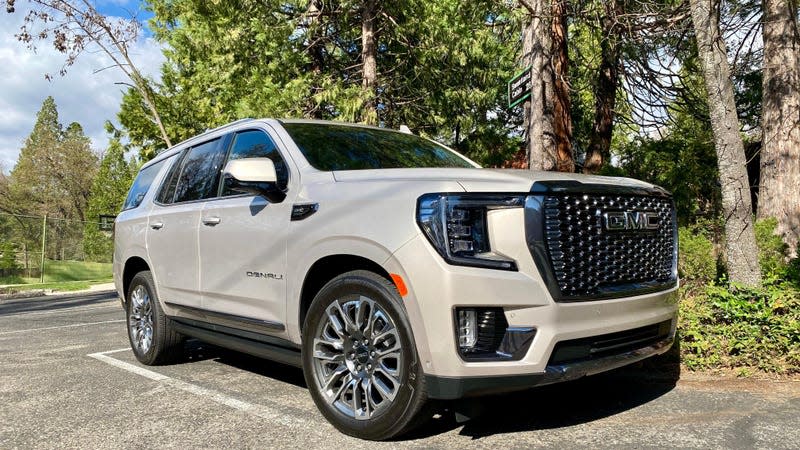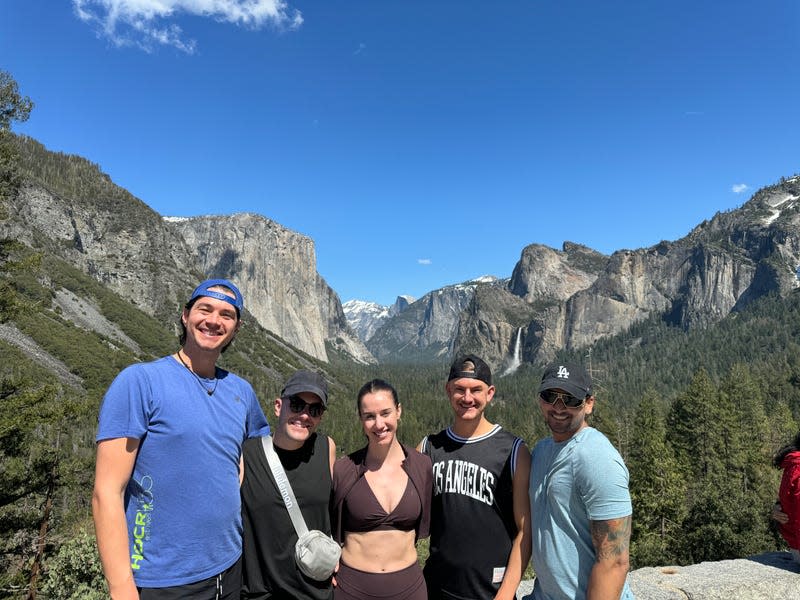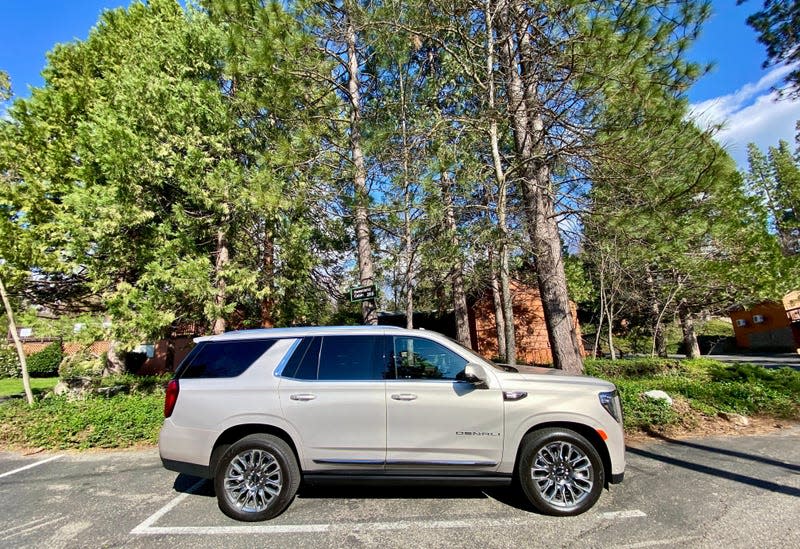GM's Super Cruise Is Handy, But It Definitely Has Its Quirks
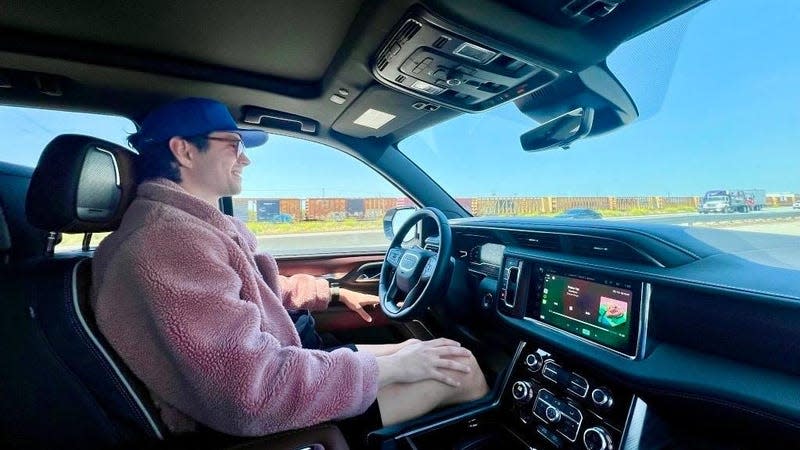
My friend group was recently looking at taking separate cars on a road trip from Los Angeles to Yosemite when we were saved from that logistical nightmare by a big Pearl Beige Metallic GMC Yukon Denali Ultimate. This Yukon is called the Ultimate for a reason; it was equipped with GM’s Super Cruise, a rear seat entertainment system, massaging heated and cooled front seats, a sliding panoramic sunroof, and a 6.2-liter V8 under the giant hood. This truck made our trip so much smoother and more comfortable than piling into multiple cars and caravanning on the 600-ish mile round trip from LA to Yosemite. What really made the difference in our hike to the woods was the Yukon’s Super Cruise Level 2 hands-free driving technology, which massively reduced the fatigue of our long drive.
I have extensive experience with ADAS technology; I was a field validation test driver for Mercedes-Benz Research And Development’s ADAS team for two years, so I’m critical of ADAS tech. It bears repeating that General Motors’ Super Cruise is a Level 2 system, so the driver is responsible for anything the vehicle does while the system is active. It’s important for consumers to understand that these vehicles do not drive themselves, the driver assistance systems just take some of the stress out of a long drive.
Full disclosure: GMC lent me a loaded Yukon Denali Ultimate with Super Cruise so I could drive my friends from Los Angeles to Yosemite National Park. It made our trip possible, kept us safe and entertained on our drive.
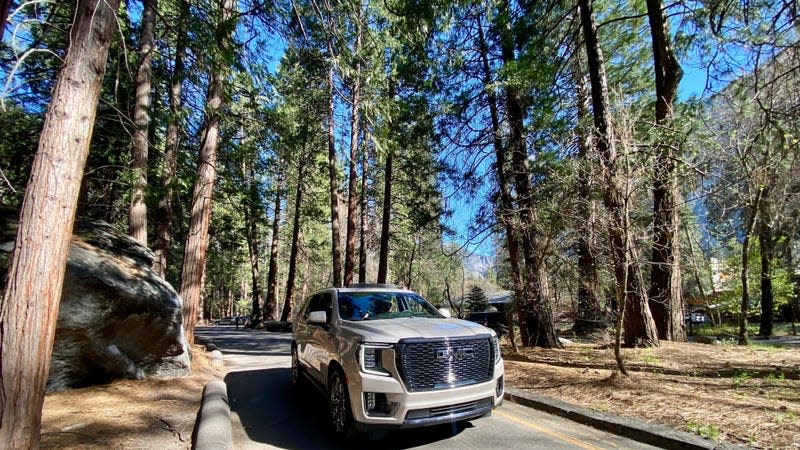
Super Cruise is one of the best Level 2 hands-free driving systems on the market, but it is still susceptible to undereducated owners trusting it too much. During my drive from Los Angeles to Yosemite, Super Cruise did a good job of navigating open freeways, but two-lane roads were much less consistent. Super Cruise handled the 5 freeway well, but its continued operation through construction zones with shifted lanes was sketchy. The system does warn the driver with a silent gauge cluster message that says Super Cruise is active in a construction zone and that the driver should remain alert, but the system should just disengage. If Super Cruise is hands-free driving, then it should deactivate when the driver needs to steer.
The automatic lane change function was more of an annoyance than a benefit, but it’s easily deactivated. With automatic lane change active, the Yukon would merge right and then immediately merge left back into its original lane when it realized that the new lane wasn’t moving any faster. This happened several times, and stressed me out as the driver so I turned it off. It still allows drivers to initiate lane changes while Super Cruise is active by tapping the turn signal, and this function worked flawlessly.
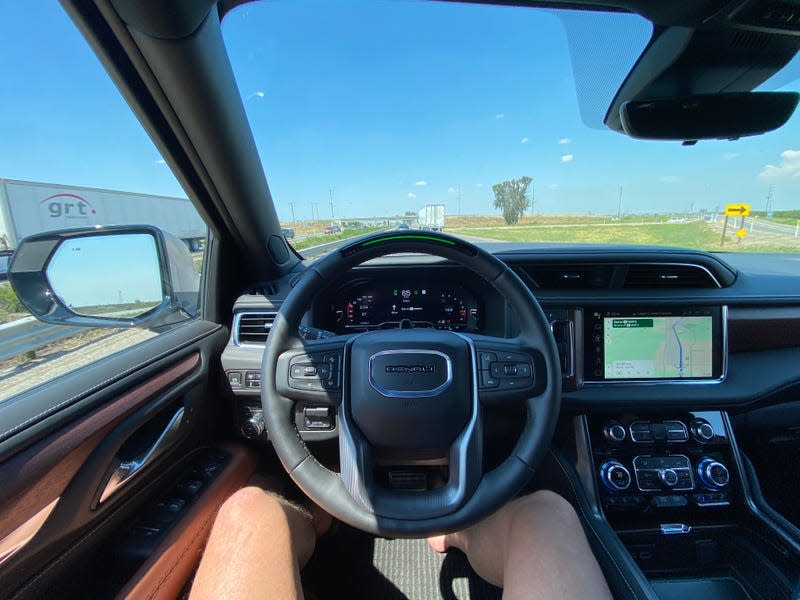
The majority of the drive was smooth, but toward the end of my return drive, Super Cruise developed a habit of randomly accelerating toward vehicles ahead of us, then slamming on the brakes when it got too close. The skies were clear, the lead vehicle wasn’t drifting or merging, and this happened on straight highways so I saw no possible explanation for that behavior.
When the system disengaged and required the driver to take control, Super Cruise wouldn’t reliably disengage when I pressed the steering wheel button. Sometimes I would press the disengage button and wiggle the steering wheel and Super Cruise wouldn’t disengage. A few times it even began slowing down in the lane because it didn’t think I was responding to the disengagement notice despite pressing the button.
The Yukon was the perfect vehicle for this trip; it comfortably sat myself, my four friends and all of our luggage. My friends loved the rear seat entertainment screens and the onboard wifi hotspot, and front seat occupants enjoyed the massaging seats and the great stereo. Road noise was unintrusive on cement roads and nearly imperceptible on smooth asphalt. Fuel economy stayed in the high teens which ain’t great but given the Yukon’s bulk it makes sense. The front seat lumbar controls were infuriating, however. Front seat occupants must use the controller on the side of the seat to navigate a pop-up menu on the infotainment screen since it doesn’t allow touch screen selection of seat adjustment options or massage functions. The menu would freeze often and not respond to seat control inputs, but when it did work it was appreciated.
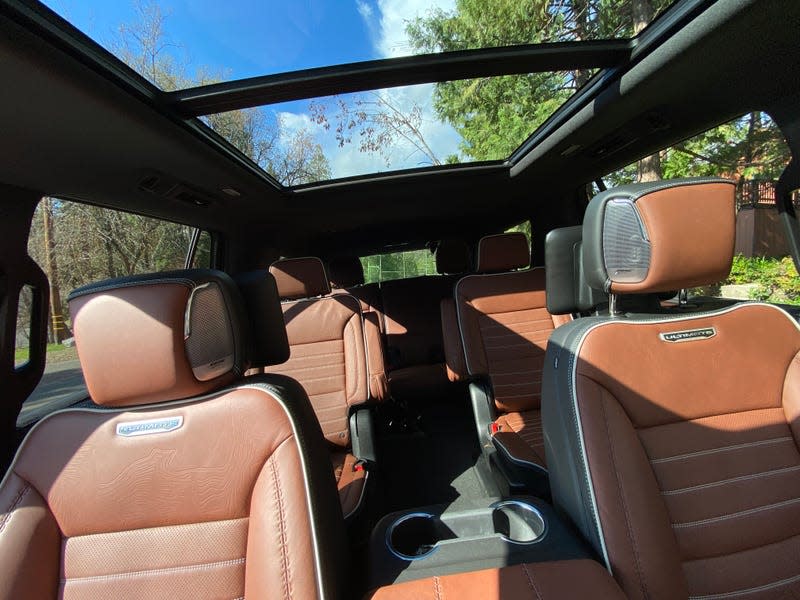
The Yukon Denali Ultimate with Super Cruise is a hulking vehicle that has tons of passenger space and an epic retractable panoramic sunroof. It safely ferried me and my friends through one of the most beautiful regions in the country, and Super Cruise made the monotonous parts of the drive much more enjoyable. For the vast majority of the drive, Super Cruise worked great, but I recommend babysitting the wheel quite closely. I recommend this for all Level 2 systems, and that includes so-called hands-free systems like Ford’s Blue Cruise and Tesla’s misleadingly named Autopilot. The days of taking a nap while your car autonomously drives you somewhere aren’t quite here yet, unless your friend is an automotive journalist who gets press cars and takes you on road trips, then you basically have an autonomous car. Until then, Super Cruise is a great way to reduce a bit of driver fatigue, just keep your hands close to the wheel.
